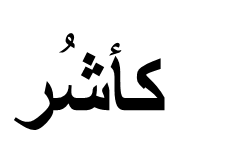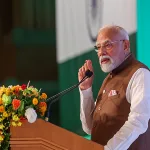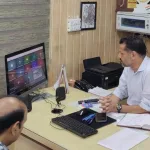FORSAKEN IDENTITIES
As the world observes Kashmir from a geopolitical perspective, a more subdued tragedy transpires domestically. The region’s longstanding cultural legacy is eroding owing to disregard. This pertains not alone to historical architecture, dressing sense or local food culture. It pertains to a framework of knowledge, identity, and abilities that once characterised the life in Kashmir, the Kashmiri language. Kashmiri language is witnessing a sharp decline owing to societal neglect, political turmoil, and governmental indifference.
Claude Lévi-Strauss, states that language has a subconscious structure that is intricately woven into myth, kinship, as well as the cultural values. In 1962 he stated that, “Language is a form of human reason, which has its internal logic of which man knows nothing.” This hidden structure reflects the complex relationship between language and culture, shaping how people understand their world and preserving shared knowledge, values, and memories.
The Kashmiri language (Koshur), an off shoot of the group of the Dardic languages of the Indo-Aryan family, currently faces a pivotal moment. Kashmiri, formerly a thriving cultural medium rich in poetry, folklore, and philosophical debate, is today spoken by just a small segment of its native population in significant contexts.
The marginalisation of Kashmiri stems from the region’s unrest. The painful migration of Kashmiri Pandits in the 1990s, which encompassed numerous principal custodians of the language, interrupted its continuity. Displaced communities transitioned to Hindi or English. The protracted conflict since the late 1980s has relegated cultural endeavours, hence constraining Kashmiri-language institutions.
Lev Vygotsky, the Russian psychologist in 1930’s in his socio-cultural theory stressed on the fact that a child reaches to the highest of his mental capabilities through his mother tongue. He further argues that cognitive development in children occurs as a result of social interactions. According to him, mother tongue plays a central role with regard to the learning and the thought process of the child.
Despite constitutional recognition, Kashmiri remains largely absent from education. Though 6.8 million identify it as their mother tongue (Census 2011). According to the survey of 2017 conducted by Jammu and Kashmir State board of School Education, fewer than 5% of schools use it for instruction, and less than 10% of students study it beyond the basics. Urdu and English dominate classrooms.
The Kashmiri language is experiencing domain shrinkage, now largely confined to informal rural conversations. Over the past 20–30 years, social and psychological shifts have pushed English and Urdu to the forefront, relegating Kashmiri to a third or rarely second choice.
Many Kashmiris now avoid speaking their native tongue, viewing Urdu or English as markers of sophistication. Parents raise children in these languages, often unaware of their own limitations. This paradigm shift results in literal translations of Kashmiri thoughts, eroding the language’s emotional and cultural nuance. Many Kashmiri words hold deep emotional and cultural meanings that are lost in translation, as no foreign language fully captures their melodic and semantic nuance.
Leaving behind or neglecting their native language will mean the loss of the knowledge systems according to the Antonio Gramsci’s theory of Hegemony. Gramsci emphasises in his ‘Selections from the Prison Notebooks’, 1971, that for the marginalized people, safeguarding the mother tongue is an essential tool for combating cultural hegemony and sustaining the intellectual independence.
In the digital age, Kashmiri is progressively neglected. Although languages such as Hindi and Tamil flourish online, Kashmiri suffers from a deficiency in visibility, digital resources, and content. Inadequate publications and insufficient technology support further impede its modernity and accessibility.
The NGO’s like ‘Adbee Markaz Kamra’z have also been working to publish the Kashmiri literature and preserve oral histories. ‘Adbi Markaz Kamraz’ or ‘Adbee Markaz Kamraz Jammu and Kashmir (AMKJK), the oldest and largest cultural and literary organisation in Jammu and Kashmir is dedicated to the promotion and preservation of Kashmiri culture, literature, art, and the language. In the year 2023, the NGO began advocating for the inclusion of a Kashmiri language translation option in the Google Android application and the development of a ‘Nastaleeq’ Kashmiri language keyboard through an internet campaign. Microsoft added Kashmiri to its translator, though the tool remains underdeveloped.
Conclusion
The deterioration of Kashmiri represents a cultural and political crisis. Beyond speaker numbers, it is devoid of institutional backing, intergenerational transmission, and public visibility. The languages that replace it lack the emotional profundity of Kashmiri. In the absence of coordinated initiatives in education, media, and cultural revitalisation, Kashmiri language carries the risk of becoming a vulnerable language.
Preserving Kashmiri means safeguarding a worldview, collective memory, and centuries old heritage. Its neglect threatens not just a language, but jeopardising our history and culture and thus can pose a threat to our existentialism.
(Author is Research Scholar, Department of History and Culture Jamia Millia Islamia, New Delhi. Email: [email protected])








